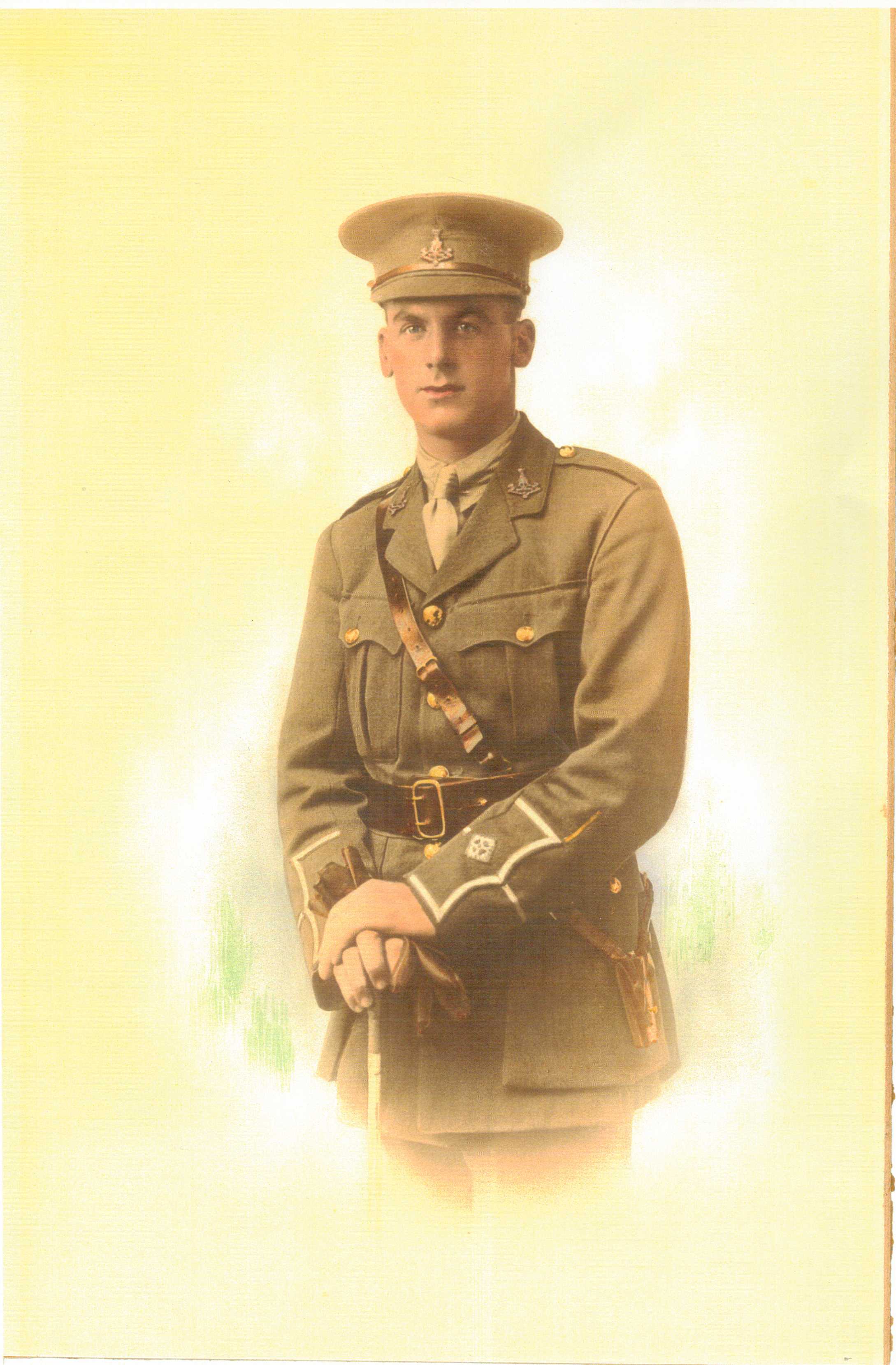
Information submitted by Mark Tovey, William Buckle is Mark’s wife’s great uncle.
William Buckle was born in Middlesbrough. In 1914 he was a 21-year-old clerk working for a well-known Middlesbrough steel company. The war was 4 weeks old when he, like many other young men from North Yorkshire, went to Northallerton to join their local Territorial Army Battalion – 4th Battalion, The Yorkshire Regiment (4th Green Howards).
On 16 April 1915, 4th Green Howards were ordered to Belgium. On 22nd April the German Fourth Army attacked the Allied front line in the North of the Ypres Salient and, using poison gas for the first time, threatened Ypres itself. This was a crisis and, despite their inexperience, 4th Green Howards went straight to the fight. For the next month the Yorkshiremen were in almost continual action, suffering many casualties. Private William Buckle was one of the Battalion’s 200 casualties. He had been shot twice, in the right shoulder and hip. He spent the next 2 months recovering before, as a corporal, training Green Howard recruits in Northallerton.
Surprisingly, after his wounds healed, he volunteered for one of the most dangerous jobs in the Army – as a platoon commander. After a 4½ month course at an Officer Cadet Battalion at Denham, Buckinghamshire, Buckle was granted a commission as a Temporary Second Lieutenant in July 1916. The following month he was posted to 8th Green Howards. Buckle served on the Somme through the fierce battles of that summer and autumn until his battalion was ordered north to the Ypres sector in October.
In May 1917 the Battalion occupied trenches in the Hill 60 sector, about 3.5km SE of the Ypres City walls. On 7 June at 3.10 am, following the detonation of 2 huge mines under the German trenches on Hill 60, the 8th Green Howards assaulted and captured their objectives. The fighting during that hot summer’s day, cost 8th Green Howards with 37 men killed and 218 men wounded or missing.
Second Lieutenant William Buckle was wounded and evacuated to a Casualty Clearing Station (CCS) at Remy Sidings where he died. He was 24. He is buried in Lijessenhoek Military Cemetery.
Explore more memories from the ribbon
-
Willimina ‘Minnie’ Melville
Willimina ‘Minnie’ Melville 28/04/1886–11/02/1967 Minnie was born in Johnshaven, Scotland and volunteered for the British Red Cross in November 1916. She was initially stationed at Whalley Military Hospital as a VAD nurse from 4/11/1916 to 26/06/1917, before moving to Catterick Camp Military Hospital, again as a nurse, from 15/01/1918 until 6/04/1919. Willimina Melville, now Mrs Scales married James Jarvis Scales in 1922 and they were married up until her death on the 11th of February 1967. Minnie and Jim had emigrated and were living in Nanaimo, British Columbia, Canada in 1967. This information, provided by Alathea Anderssohn has been drawn from the Imperial War Museum’s ‘Lives of the First World War’ archive.
-
Tempest Carey Bullen
Submitted by Jennifer Bullen daughter in law of Lieutenant Bullen. Tempest Carey Bullen was born on the 28th of May 1898 in North Shields. He is listed in the 1901 census along with his father Tempest Carey, his mother Edith, brothers William and Harry and sisters Edith Anna and Kathleen. His father’s occupation is listed as “ship broker”. The family were living in the Percy ward of Tynemouth and must have been comfortably off because they had a servant called Ada George and a nursery maid called Elizabeth Knox. By 1911 the family had moved to Woodbine Avenue in Gosforth. In the census Tempest’s mother Edith is listed as head of the family so it is likely that Tempest senior was deceased. His elder brother (aged 15) is now an apprentice Fitter. They have a boarder, Hugh Robson (an apprentice Ironmonger) and a servant called Mary Jane Malpas. Jennifer recounts that Tempest was under age when he first tried to enlist and was promptly sent home! He persisted and subsequently joined up and went on to be awarded the Military Cross in 1918 aged about 20. He survived the war and his death is recorded in 1976 in South Shields.
-
Evan Francis Kerruish
Researched by Will Young. Born on 20th July 1897 at Port Elgin, Ontario, Canada, Evan Kerruish was destined to be burried in distant Catterick at the age of 20. His parents were the Rev. Thomas and Mrs Maria Kerruish of Hamilton, Ontario. He enlisted into 153 (Wellington) Battalion of the Canadian Expeditionary Force on 6th October 1915. He sailed from Halifax, Nova Scotia on the sister ship of the Titanic, the SS Olympic on 29th April 1917 and landed at Liverpool on 7 May. Kerruish was commissioned into the Royal Naval Air Service on 9th October 1917, serving with Torpedo Squadron No 1. The cause of his death on 13th July 1918 and reason for burial at Catterick are unknown.
